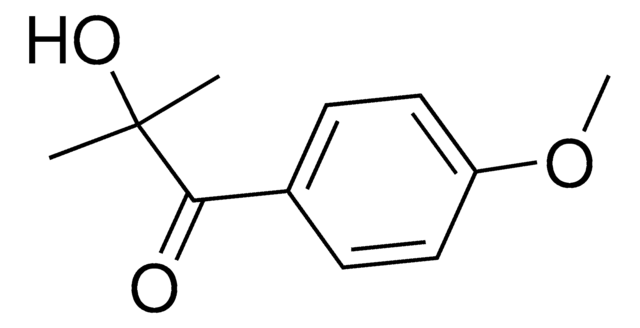900889
Lithium phenyl-2,4,6-trimethylbenzoylphosphinate
≥95%
Synonym(s):
LAP
Sign Into View Organizational & Contract Pricing
All Photos(1)
About This Item
Empirical Formula (Hill Notation):
C16H16LiO3P
CAS Number:
Molecular Weight:
294.21
UNSPSC Code:
12352128
NACRES:
NA.23
Recommended Products
Quality Level
Assay
≥95%
form
crystalline powder
color
white to off-white
storage temp.
2-8°C
SMILES string
CC1=C(C(P(C2=CC=CC=C2)(O[Li])=O)=O)C(C)=CC(C)=C1
Looking for similar products? Visit Product Comparison Guide
Application
Lithium phenyl-2,4,6-trimethylbenzoylphosphinate (LAP) is a water soluble, cytocompatible, Type I photoinitiator for use in the polymerization of hydrogels or other polymeric materials. This photoinitator is preferred over Irgacure 2959 for biological applications due to its increased water solubility, increased polymerization rates with 365 nm light, and absorbance at 400 nm allowing for polymerization with visible light. The improved polymerization kinetics enable cell encapsualation at reduced initiator concentration and longer wavelength light, which has been shown to reduce initiator toxicity and increase cell viability.
Features and Benefits
- Superior water solubility
- Biocompatible
- Sensitiveto visible light
Storage Class Code
11 - Combustible Solids
WGK
WGK 3
Flash Point(F)
Not applicable
Flash Point(C)
Not applicable
Certificates of Analysis (COA)
Search for Certificates of Analysis (COA) by entering the products Lot/Batch Number. Lot and Batch Numbers can be found on a product’s label following the words ‘Lot’ or ‘Batch’.
Already Own This Product?
Find documentation for the products that you have recently purchased in the Document Library.
Customers Also Viewed
Tiffany Zhang et al.
Scientific reports, 10(1), 15796-15796 (2020-09-27)
Inspired by the interesting natural antimicrobial properties of honey, biohybrid composite materials containing a low-fouling polymer hydrogel network and an encapsulated antimicrobial peroxide-producing enzyme have been developed. These synergistically combine both passive and active mechanisms for reducing microbial bacterial colonization.
Joshua D McCall et al.
Biomacromolecules, 13(8), 2410-2417 (2012-06-30)
Photoinitiated polymerization remains a robust method for fabrication of hydrogels, as these reactions allow facile spatial and temporal control of gelation and high compatibility for encapsulation of cells and biologics. The chain-growth reaction of macromolecular monomers, such as acrylated PEG
Zachary M Geisterfer et al.
STAR protocols, 1(3), 100221-100221 (2020-12-31)
Cell-free extract derived from the eggs of the African clawed frog Xenopus laevis is a well-established model system that has been used historically in bulk aliquots. Here, we describe a microfluidic approach for isolating discrete, biologically relevant volumes of cell-free
Benjamin D Fairbanks et al.
Biomaterials, 30(35), 6702-6707 (2009-09-29)
Due to mild reaction conditions and temporal and spatial control over material formation, photopolymerization has become a valuable technique for the encapsulation of living cells in three dimensional, hydrated, biomimetic materials. For such applications, 2-hydroxy-1-[4-(2-hydroxyethoxy) phenyl]-2-methyl-1-propanone (I2959) is the most
Benjamin D Fairbanks et al.
Macromolecules, 44(8), 2444-2450 (2011-04-23)
Various techniques have been adopted to impart a biological responsiveness to synthetic hydrogels for the delivery of therapeutic agents as well as the study and manipulation of biological processes and tissue development. Such techniques and materials include polyelectrolyte gels that
Our team of scientists has experience in all areas of research including Life Science, Material Science, Chemical Synthesis, Chromatography, Analytical and many others.
Contact Technical Service










